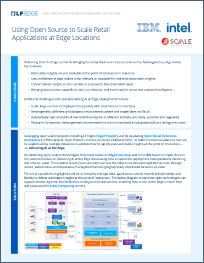
Secure Device Onboard” Project Name Change Notification:
The Secure Device Onboard project will be officially changing its name to “FIDO Device Onboard” in Feb 2023. FIDO Alliance promulgates the FIDO Device Onboard (FDO) specifications. The LFEdge FDO project develops open source software that is intended to be compliant with those specifications. All references to “Secure Device Onboard/SDO” will be replaced by “FIDO Device Onboard/FDO”.
Disclaimer: LFEdge and The Linux Foundation are not affiliated with the FIDO Alliance and are not involved in developing the FDO Specifications. FIDO Alliance does not sponsor or endorse the LFEdge FDO project or any software developed by the project.
An Automated “Zero-Touch” Onboarding Service
To more securely and automatically onboard and provision an edge device, it only needs to be drop-shipped to the point of installation, connected to the network and powered up. FDO does the rest. This zero-touch model simplifies the installer’s role, reduces costs and eliminates poor security practices, such as shipping default passwords.
Secure Device Onboard provides easier, faster, less expensive, and secure onboarding of devices. It expands TAM for IOT devices, and in turn accelerates the resulting ecosystem of data processing infrastructure. Most “Zero touch” automated onboarding solutions require the target platform to be decided at manufacturer.
Key benefits of Secure Device OnBoard include:
- Enables Build-to-Plan Model — ODMs can build identical IOT devices in high volume using a standardized manufacturing process. Reduces inventories, supply cycle times, and costs.
- FDO “Late Binding”– allows the device’s target platform to be selected “late” in the supply chain, at first power-on.
- It’s Open – means its service & cloud independent. Devices are bound to target the ecosystem at install. Works with existing cloud services, it does not replace them.
Origin & History
Secure Device Onboard was released as open source software by Intel Corporation and joined LF Edge as a Stage 1, “At Large” project in February 2020, based on Intel® SDO Version 1.8.
The original Intel® SDO launched in September 2017 as a stand-alone Intel product reflecting the original SDO protocol and architecture specifications. With the complex ecosystem needed for success of this product, Intel decided to open source and donate the core functions of Intel® SDO to the community in order to drive an industry standard, resolve key industry friction points, and allow the IOT market to grow faster. Intel believes that open sourcing with a vibrant ecosystem will allow SDO to evolve into a true industry standard.
Integrating Across the Edge
A primary objective of Secure Device Onboard is to expand TAM for IOT devices. To achieve this goal, a cross-industry collaboration of device manufacturers, distributors, systems integrators, cloud service providers, and device management software vendors is required to accelerate adoption.The Linux Foundation’s LF Edge is the ideal organization to facilitate this collaboration and accelerate adoption of this important technology.
FDO will accelerate adoption of devices into Home and Industrial ecosystems, helping drive the need for all of the current projects in the LFEdge community.
Get Started With FIDO Device Onboard
